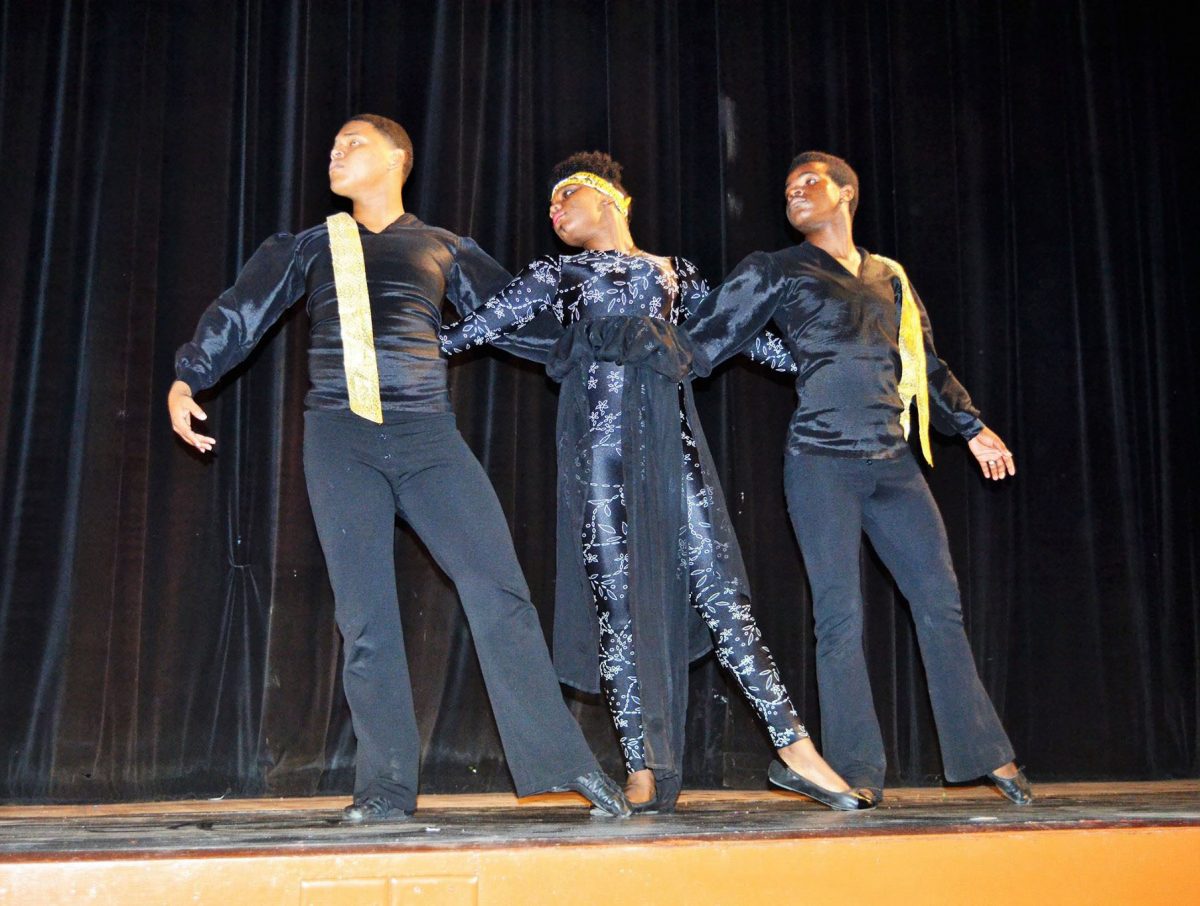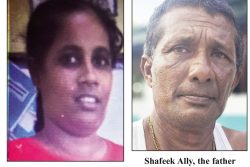 Public theatre has begun to return after sporadic stops and starts on the major world stages like the London West End and Broadway and a total shutdown in many other countries, including in the Caribbean. Very prominent in this revival in Guyana was the return of the National Dance Company (NDC) to a full production in the Cathedral of the Immaculate Conception on Brickdam a few weeks ago.
Public theatre has begun to return after sporadic stops and starts on the major world stages like the London West End and Broadway and a total shutdown in many other countries, including in the Caribbean. Very prominent in this revival in Guyana was the return of the National Dance Company (NDC) to a full production in the Cathedral of the Immaculate Conception on Brickdam a few weeks ago.
It was the first opportunity to see the NDC in performance post-Covid, but it might not go down as a normal public production, since these visits to the church have been a regular and long-standing commitment of the company but not on its calendar of public events. It did, however, fit a pattern seen so far in which the few productions that have returned to the stage after the pandemic have used non-conventional venues, though Ingrid Griffith’s “Shirley Chisolm: Unbossed and Unbowed” was at the Theatre Guild Playhouse in April. The performance of dance in the cathedral, nonetheless, has several significant associations.
The history of theatrical performance has always had close ties to religion. Theatre has its original roots in spiritual ritual and ceremony, including a prehistoric world picture. This continued in many religions, such as the Greek with their Bacchanalian rites, Festival of Dionysus and the employment of drama for religious education in the Classical Era. Long after the decline of that period, the rebirth of western theatre took place in the Roman Catholic Church in the Middle Ages with liturgical drama performed at the altar.
Dance, specifically, with roots in spiritual ritual, has sustained its place in many religions. The NDC performance in the cathedral, became in many ways quite a satisfying return home. This elegant, elaborate, spectacular production of dance was quite commensurate with the grand building in which it was staged. It was the use of performance space in a magnificent work of Christian architecture with its theatrical stage possibilities, various effective levels, aisles, and an altar that accommodated liturgical and other plays many centuries ago.
Magnificent, spacious, with sacred and romantic associations as it might be, however, this venue as a theatre for a normal production, has many limitations. It can inspire the imagination, but it is very restricted by having no stage lighting, neither dimmer nor spots, a few impeded sight lines and poor sound reproduction from the podium microphone which rendered the hostess inaudible. Much was lost there. But for dance, there was creative and effective use of the more than adequate space, the levels, entrances and exits and the aisles.
Apart from that microphone, the sound had no inhibitions, as the projection of music was powerful and sometimes electrifying. Special care seemed to have been taken with the excellent costuming, which in a number of dances exhibited a carnival of colour. As a whole, the performance was spectacular.
The programme was directed by Vivienne Daniel, Director of the National Dance Company, and performed by members of the company and associates, as well as the introduction to dance production of a group of children. The production was built on a variety of choreographies on religious themes, powered by dynamic music including gospel and classical. The dances ranged from large groups to trios, duos and solos. Most of the choreography was by Daniel with about three dances choreographed by NDC members. The presentations climbed towards the end to high energy, very lively, triumphant and celebratory.
Again, just as it was in the mediaeval rebirth of theatre, the performances were expressions of faith. The final dance, responsible for that crescendo of sound and movement, was indeed a triumphant piece, “The Truth and the Light” danced to “The Victory”. It was up-tempo to express a sense of triumph for the human spirit after the intervention of love which solves problems. After all that was explored in the menu of choreographies, it was a good mood on which to bring the curtain down.
The programme opened with a ritualistic and symbolic “Come Into the Temple” with the entire cast of dancers in a procession down the aisle and through the audience. It was a welcome to the audience and to the programme. It also symbolised entry into the sanctuary of the church, a place in which believers are received. The performers processed to a march of gospel music.
Other dances reflected the Easter season recently ended, and focused on the crucifixion. The Easter section was called “The Way of the Cross” and carried by a collection of works. This was a trilogy of dances performed by the NDC and choreographed by Daniel, representing three emotions relevant to the festival: ‘Sorrow’, ‘Suffering’ and ‘Empathy’. ‘Suffering’ was performed to “Hallelujah”, originally by Handel, but this was an adaptation called “The Easter Hallelujah”. Here was where the great variety of the stage space was explored and the different levels taken advantage of. “Empathy” was performed by Marisha Arthur, Mariella Bennett and Ticona Welcome.
Another section was led by “The Hands of Christ” which was for a trio of male dancers and performed by Joseph Bobb, Emperor Brummell and Shamar Austin. It was based on the music “I Need An Angel” and choreographed by the dancers. It was followed by a dance designed for the children invited to share the programme with the NDC for their experience and development. That was performed to a version of “The Lord is My Shepherd”.
Much consideration was given in the programme to the state of the world and an appeal for the Lord’s intervention. These dances were moved by a sense that the world needs help under an onslaught of fighting, killing and the conflicts and insurrections now in progress. The NDC danced “The Plea” , obviously in supplication to God and choreographed to the song “Father Can You Hear Me”
Another set of dancers on the same theme followed this, with both of them choreographed by the dancers. “Deliverance” was also for three dancers and performed by Joseph Bobb, Marisha Arthur and Mariella Bennett. This was another prayer for the salvation of mankind, as was another with the appropriate title “Supplication”. The other dance in that group was by the duo Jerusha Dos Santos and Jenille.
There were two dances on the theme of faith. The first was “Faith 2” by Tivona Cole and Sati Udho, while the other, “Faith 3”, introduced a difference as it was a classical solo performed en pointe by Jerusha Dos Santos.
“Gratitude” was another theme explored by the choreographies and featured “A World of Blessing” by three male dancers and “The Blessing” which the dancers choreographed.
The NDC’s return to the cathedral was significant and symbolic. The production was rewarding, leaving no doubt as to the authority of the company, sufficiently professional, versatile and experienced to perform on any stage. The company used imagination and creativity to overcome the limitations in the building while taking advantage of the spaces to turn out a performance that was not only art, but glory, spirit and faith.









